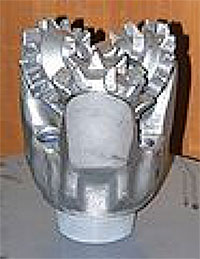Creativity and the innovative use of technology are hallmarks of successful geologists, and often the best engineering breakthroughs are possible because of the specialized knowledge and in-depth understanding of the earth. Welcome to an interview with Daniel Flores, an AAPG member who lives and works in Peru, who has developed an innovative slim-hole drilling and sampling tool that can work in many settings.
What is your name and your relationship to the oil industry / geology?
My name is Daniel Flores, I'm a geologist and I've been working in oil and gas industry for 12 years. I'm currently working on a project to boost the reactivation of hydrocarbon exploration through of slim-hole drilling, for which I've designed a system to adapt a small mining drill and be employed in this type of drillings.
What is your background in new technologies?
I've always liked technology and its various applications in the industry. I'm now taking a course in a local FabLab in Peru over digital manufacturing that is being taught by Neil Gershenfeld from MIT.
What do you think the outlook is for innovation and new technologies in today's oil industry?

Typical Tri-cone diamond bit
The current crisis, like so many others in the past, has unleashed a worldwide flow of creativity and innovation in new technologies for industry. This should be a strategic and survival issue for companies, but this logic is not always shared. Instead, many of them opted first-hand to deactivate their I+D+i departments as an alternative to reduce costs and mitigate the drop-in revenue. In contrast to this and with the aim of improving their competitiveness and being more dynamic in their adaptation to the situation, companies should give as a core business treatment to their I+D+i department and not as a trendy flag to display it as a vanguard sign.
What have you been working on lately? What are your goals? What does your new technology do?

2 From Boart Longyear. equipment LF 230
I'm working on prototyping of pressure control system that I talked before. The immediate objective is to finish the construction of the viable minimum prototype that allows to validate the technology and from that get alliances/partners/investors to catapult the next step: drill a pilot well that serves to obtain the RC (release candidate) version of system.
The system works with sensors that anticipate the arrival on surface of variations in the mud density readings while drilling. In most cases these decrements are attributed to pressurized influx of oil or gas from geological formations traversed. In response, a protocol automatically activates valves located at flow line of mud, which can instantly increase the pressure in the borehole and thus counteract the pressure of formation without it being necessary incorporate additives to mud to achieve the same result.
What are the potential applications and benefits of your new approach/ technology?
The drilling with this system could be applied in:
- Exploratory drilling of oil and gas
- Exploration frontier areas and near to foothill or high of basement too
- During seismic acquisition campaigns, as advanced drilling
- Re-entries into old exploratory wells or for deepening to new objectives
- Drilling in-fill on matures fields
- Geothermal exploration
Some benefits
- A continuous rock core is obtained from surface to final depth with all the volume of information it means
- Facilitates the final disposal of drilling mud due to minimizes use of additives
- Decrease between 50 and 75% in the cost of drilling compared to a conventional operation
- In Peru, does not require an Environmental Impact Study only a license that takes 90 days in average to obtain. This represents a dramatic reduction in times and investments in exploration
- The operation area is approximately 30 x 30 m and the number of people in the operation is 30 on average
- Drilling and casing each stage with the same rod at the same time, like casing drilling, without having to make long trip to remove the bit to cementing. Take advantage of the central space of the diamond bit to run the next stage
- If required, there are probes for logging this type of wells
- There are tax benefits for technological innovation projects where total investment in the project is refunded with tax credits (in Peru, the government returns up to 175% from total amount invested)
What do the conditions need to be for your technology to have maximum positive impact? Under what conditions might it not work?
To have the maximum impact it is necessary to certify the system under international standards to be able to enter to the main markets worldwide to meet the current unsatisfied demand of the companies: drill to discover new reserves. Also, a critical and determining factor is the achievement of manufacturing and fine-tuning the sensors that are the basis of the system and that can withstand operating conditions while maintaining accuracy and reliability.
What are future trends that will benefit what you are working on?
Renewable energies are becoming increasingly competitive. Some countries have aligned themselves with short-term targets to reduce greenhouse gas emissions. In this sense, this proposal has as secondary objective to cover the high demand within the geothermal industry which has as a challenge for its development the drilling of exploratory wells which represent the activity of greater investment and with a high risk on upstream.